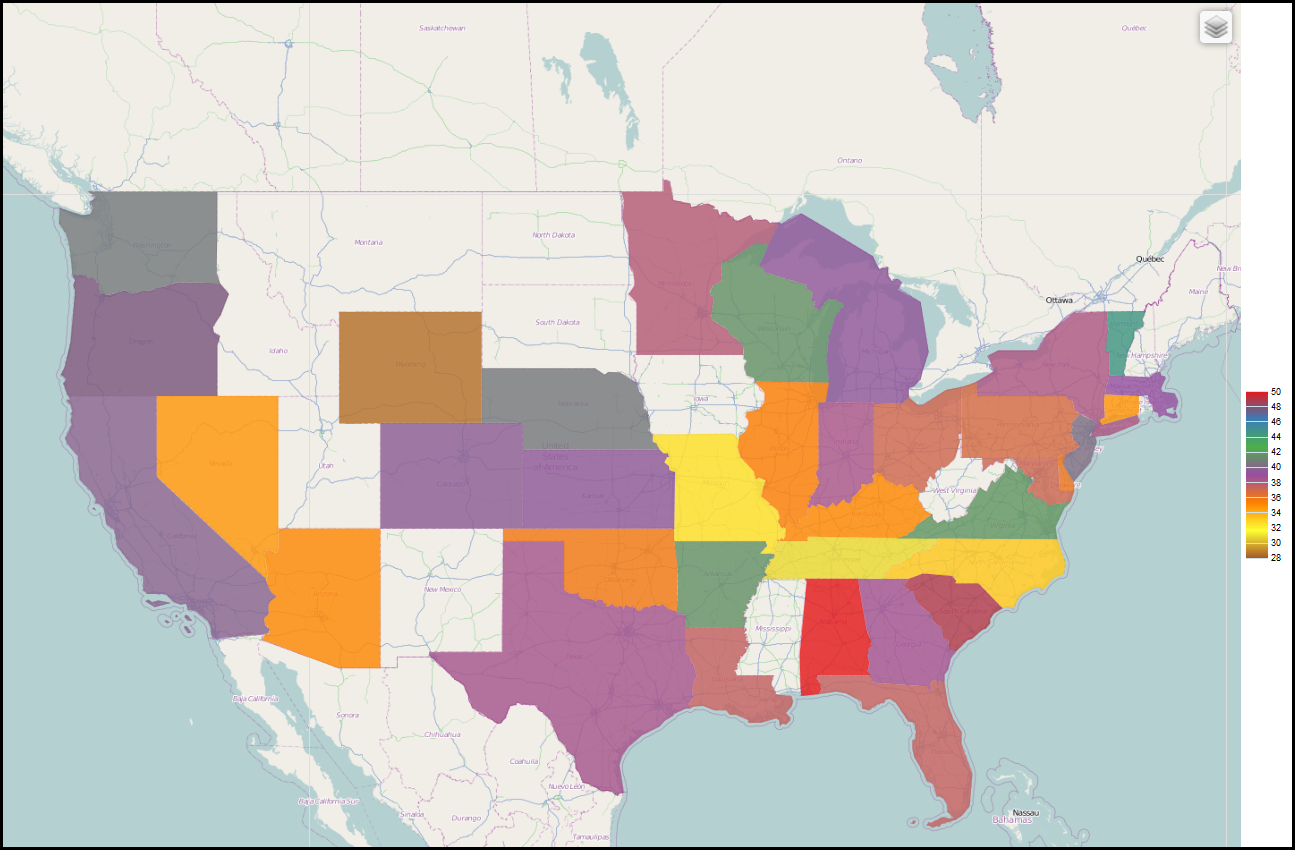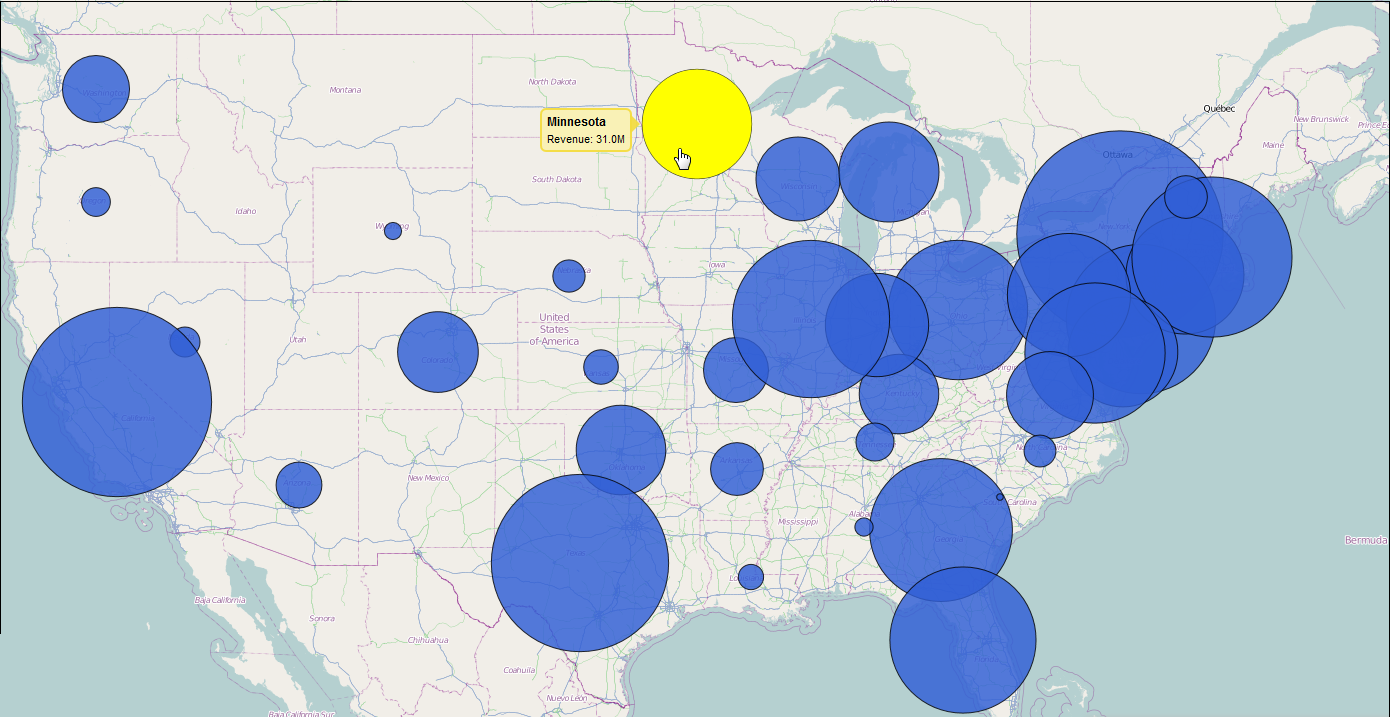Recent DB2 Web Query group PTF levels 4 through 7 include a host of valuable new enhancements. Learn more about what are sure to be this product's most popular new features.
In my last TechTip, I introduced you to several new features that have been delivered in DB2 Web Query version 2.1 group PTFs over the last year and a half. In this TechTip, you'll learn about three more major improvements to the product: REST Web Services, an application extension named WQRAX, and the new map-charting feature.
REST Web Services
In versions 1.1.1 and 1.1.2 of DB2 Web Query, reports could be invoked outside of the standard DB2 Web Query interface by calling a SOAP-based web service. This meant that reporting content could be run directly from other applications and end users did not have to use the traditional DB2 Web Query interface (called the BI Dashboard). While the SOAP-based web services are still available in version 2.1, they are not strategic for these types of integration requirements. It is recommended that you instead use the new REST-based web services that are available in group PTF level 7. If you aren't familiar with RESTful web services (in general), you can learn more about it here.
Comparing SOAP and REST is not something I am going to delve into in this article. There are devoted camps on both sides of this debate, but one thing that really stands out about REST is its ease of use. WSDL documents and SOAP envelopes aren't required; from an HTTP client (like a web browser), you just specify in the URL the object (the DB2 Web Query report) and identify what action to want to take on it (run it). Here's an example of how to run a DB2 Web Query report directly using REST:
http://my_server:12331/webquery/rs/ibfs/WFC/Repository/db2wbqry/
my_folder/my_report.fex?IBIRS_action=run
In my (humble) opinion, that's much easier than SOAP!
WQRAX
If you want to integrate DB2 Web Query content, you can either call the REST web services as described above or use the DB2 Web Query REST-based Application Extension (WQRAX), an abstraction layer that sits on top of (and uses) the DB2 Web Query REST web services. WQRAX is a DB2 Web Query Standard Edition feature that allows a DB2 Web Query reporting object to be run and presents the output by invoking a URL that represents the report. As with REST, It allows web browsers or other web applications to run and display those reports directly from an application and eliminates the need for users to log in to the DB2 Web Query BI Portal, locate a report, and run it.
So why would you use it instead of coding to the REST web services directly? Great question! Using WQRAX does offer several distinct advantages:
- It provides four authentication methods for user identification and log in. With REST, you must explicitly pass the user profile and password in the URL login request.
- It passes the necessary authentication information in the HTTP header of subsequent requests in the same session, which eliminates the need to pass explicit user credentials on every request (such as when you want to run a report). While most web browsers will do this for you, if you are calling the REST web services from your own web application, you must extract this information from the login response and include it in the HTTP header of subsequent REST requests.
- It detects input parameters and automatically builds necessary prompt controls at run time.
- It performs necessary URL redirection that's required to retrieve and display the output correctly in the web application.
- It includes a browse mode, an interface for users to traverse the Web Query repository tree and browse the reporting object content without knowing the specific URL for a top-level folder, subfolder, or report.
- It includes a short URL feature that hashes and reduces a long folder and report name down to a 12-character string, which is advantageous for abbreviating URLs that have report and folder names. This feature also provides a way to obfuscate the URLs (in the event you do not want to expose them to your end users).
For example, instead of using this long URL…
http://my_server:12331/wqrax/report?qwqPath=Century_Electronics/Assignment_01_-_Simple_Reports/1b_Top_10_Products_by_Margin.fex
You could use this one to run the same report:
http://my_server:12331/wqrax/report?id=qbRtO8U7sPdc
For more information on WQRAX, see the REST-based Application Extension administration guide.
Lightweight Maps
Another exciting feature in group PTF level 7 is a new mapping architecture for the HTML 5 output format. This feature allows report developers to create map charts based upon data with geo-location information (for example, states and/or countries). Information can be aggregated and viewed as symbol layers from a map perspective. Users can zoom into and out of up to nine layers and drill down into a location to reveal more information. In this release, two popular map formats are supported:
- Choropleth—This geographically based heat map (designed to find geographic "hot spots") is useful for visualizing location-based data, trends, and distributions across a geographic area. An example that displays profit margin by state is shown in Figure 1.

Figure 1: Choropleth map example
- Proportional Symbol (Bubble)—This technique uses symbols (bubbles) of different sizes to represent data associated with different areas or locations within the map. A revenue-by-state example is shown in Figure 2.

Figure 2: Proportional Symbol map example
Only the Beginning!
Business Intelligence (BI) requirements continue to expand over time as companies demand new ways to harvest, analyze, and understand the wealth of valuable information stored in their databases. As you have learned in these two articles, DB2 Web Query is a technology that continues to grow and evolve based on these requirements. You can get all of these features and leave your data on DB2 for i!












 Business users want new applications now. Market and regulatory pressures require faster application updates and delivery into production. Your IBM i developers may be approaching retirement, and you see no sure way to fill their positions with experienced developers. In addition, you may be caught between maintaining your existing applications and the uncertainty of moving to something new.
Business users want new applications now. Market and regulatory pressures require faster application updates and delivery into production. Your IBM i developers may be approaching retirement, and you see no sure way to fill their positions with experienced developers. In addition, you may be caught between maintaining your existing applications and the uncertainty of moving to something new. IT managers hoping to find new IBM i talent are discovering that the pool of experienced RPG programmers and operators or administrators with intimate knowledge of the operating system and the applications that run on it is small. This begs the question: How will you manage the platform that supports such a big part of your business? This guide offers strategies and software suggestions to help you plan IT staffing and resources and smooth the transition after your AS/400 talent retires. Read on to learn:
IT managers hoping to find new IBM i talent are discovering that the pool of experienced RPG programmers and operators or administrators with intimate knowledge of the operating system and the applications that run on it is small. This begs the question: How will you manage the platform that supports such a big part of your business? This guide offers strategies and software suggestions to help you plan IT staffing and resources and smooth the transition after your AS/400 talent retires. Read on to learn:
LATEST COMMENTS
MC Press Online